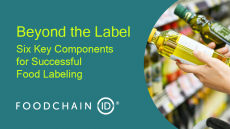Gulf seafood is safe for consumption, says NOAA
Nearly 9,444 square miles, or about four percent of the federal waters in the Gulf are still closed to commercial and recreational fishing, according to NOAA, following a federal government declaration of a “fishery disaster” in the region in late May due to the massive oil spill in the region.
The fishing area affected includes Louisiana, Mississippi and Alabama, an area where more than 1bn pounds of fish and shellfish were harvested in 2008, according to the most recent available government figures.
Under secretary for commerce and NOAA administrator Jane Lubchenco said: “The rigorous testing we have done from the very beginning gives us confidence in the safety of seafood being brought to market from the Gulf. This test adds another layer of information, reinforcing our findings to date that seafood from the Gulf remains safe.”
Seafood from the Gulf has already been subject to testing for oil and dispersant, but this new test detects dioctyl sodium sulfosuccinate, known as DOSS, a major component of the dispersant used in the Gulf.
Researchers collected 1,735 samples of fish, oysters, clams and shrimp from across the region from June to September. Using the new testing method, they found that 13 contained trace amounts of dispersant residue, but at levels “well below” those considered safe for human consumption – 100 parts per million for finfish and 500 parts per million for shrimp, crabs and oysters.
Commissioner of the Food and Drug Administration Margaret Hamburg said: “This new test should help strengthen consumer confidence in Gulf seafood. The overwhelming majority of the seafood tested shows no detectable residue, and not one of the samples shows a residue level that would be harmful for humans. There is no question Gulf seafood coming to market is safe from oil or dispersant residue.”



















